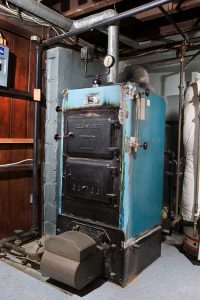 Furnace manufacturers design their heating products for durability and dependability. But at the same time, furnaces are complex devices and they can suffer from a range of malfunctions during their service lives. These troubles can be kept to a minimum through regular heating maintenance, but nothing can prevent all possible problems. And no problem with a natural gas furnace is more concerning, and more in need of a speedy response, than a cracked heat exchanger.
Furnace manufacturers design their heating products for durability and dependability. But at the same time, furnaces are complex devices and they can suffer from a range of malfunctions during their service lives. These troubles can be kept to a minimum through regular heating maintenance, but nothing can prevent all possible problems. And no problem with a natural gas furnace is more concerning, and more in need of a speedy response, than a cracked heat exchanger.
Our technicians are experts at furnace repair in Mason, OH. We understand the seriousness of situations like a cracked heat exchanger. We’ll explain below why this issue is urgent, but remember that you need to call on licensed professionals only for a repair like this. It’s a matter of your family’s safety.
The Job of the Heat Exchanger
What is the heat exchanger? It is the component of a furnace that applies heat to the air blown into the ventilation system. The source of heat in a gas furnace is the combustion gas created by the burners. This hot gas cannot come into contact with the actual air passing through the furnace because it’s harmful to breathe. To safely move the heat of the gas into the air, the gas enters a series of metal chambers—the heat exchanger. The metal walls of the exchanger heat up from the gas, and the air from the blower passes around the exchanger. The heat transfers to the air, which heads into the ventilation system. The cooled down combustion gas in the exchanger goes through a flue to the outdoors.
The Dangers of a Cracked Heat Exchanger
A heat exchanger must be sealed against the air around it, or else harmful gases like carbon monoxide will escape into the heated air sent into the living spaces. A crack on the heat exchanger may not seem like it would permit gas to escape, but these small cracks stretch open when the metal expands from the heat. When a heat exchanger is cracked, the furnace should not be turned on, and a professional who finds a cracked heat exchanger cannot allow the furnace to continue to operate until the issue is fixed.
Why Heat Exchangers Crack
Thankfully, cracks on a heat exchanger are unlikely in a furnace until it is been in operation for more than a decade. A crack can develop because of years of expansion and contraction on the metal surface. Corrosion on the metal from poor ventilation or extreme age may also lead to cracks. The best way to catch these problems, as well as prevent them from happening in the first place, is to have the furnace inspected each fall before it starts its winter operation. Skilled technicians carefully examine the furnace to see where cracks are forming or where stress and corrosion makes them likely.
When a crack is discovered, the exchanger must be replaced. For extremely old furnaces, it’s often better to replace the entire unit—a cracked exchanger is the biggest warning sign the system is too aged to keep any longer.
Call on Bartels Heating & Cooling “For a Comfortable Way of Life.” We have 24-hour emergency service available to fix your furnace.
